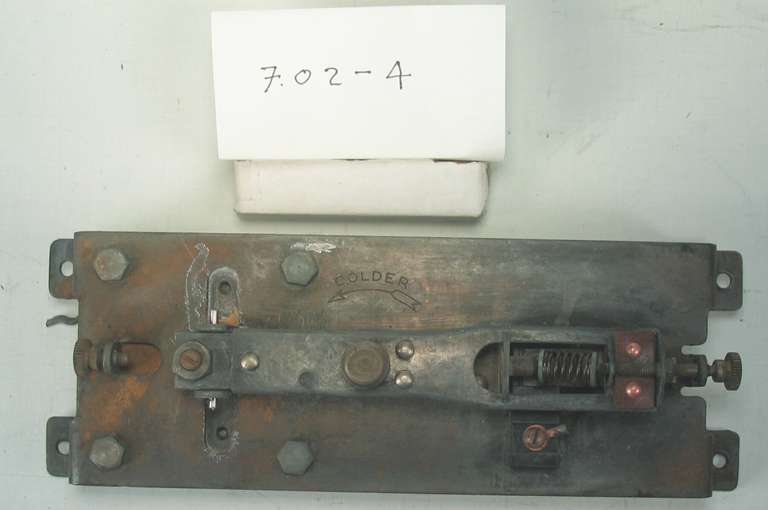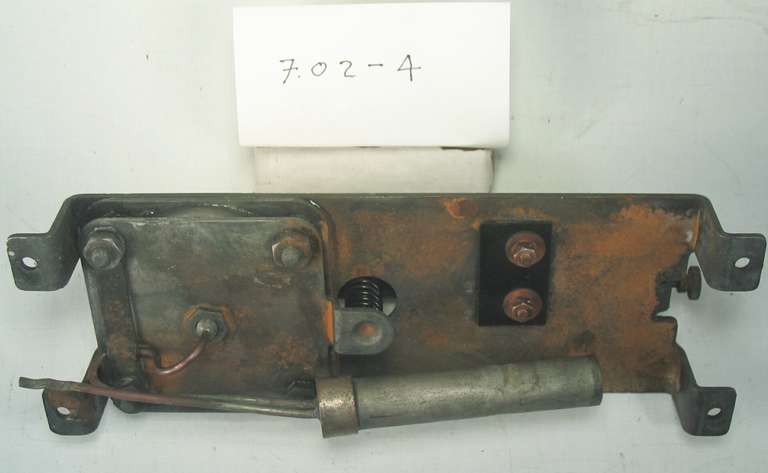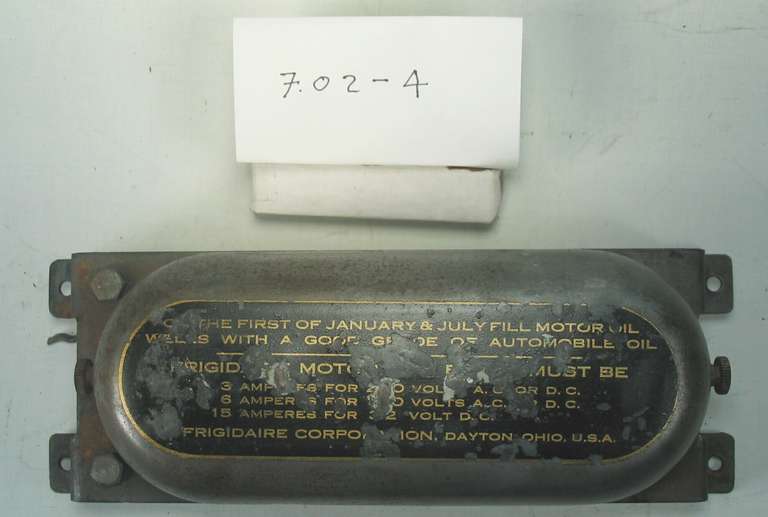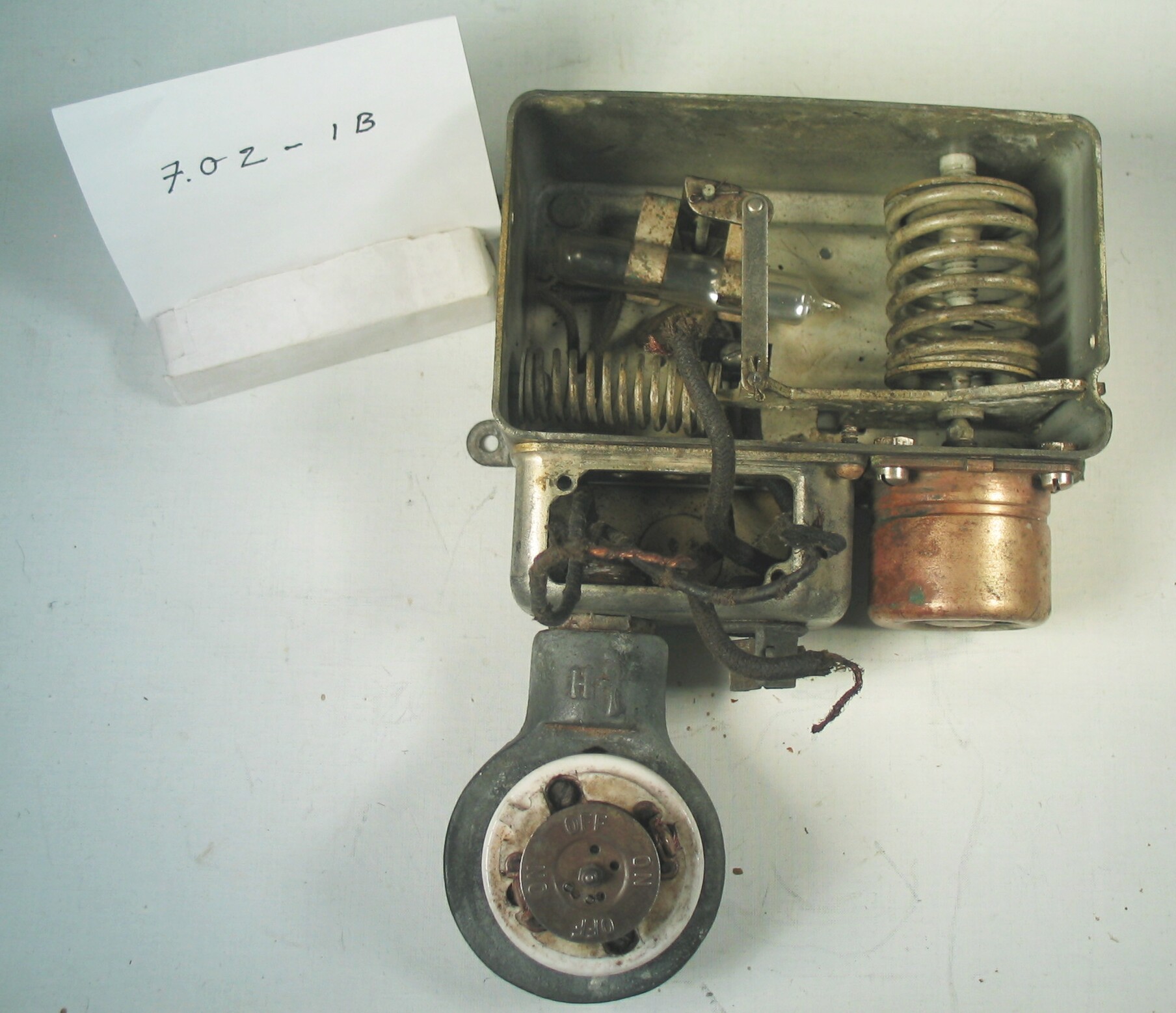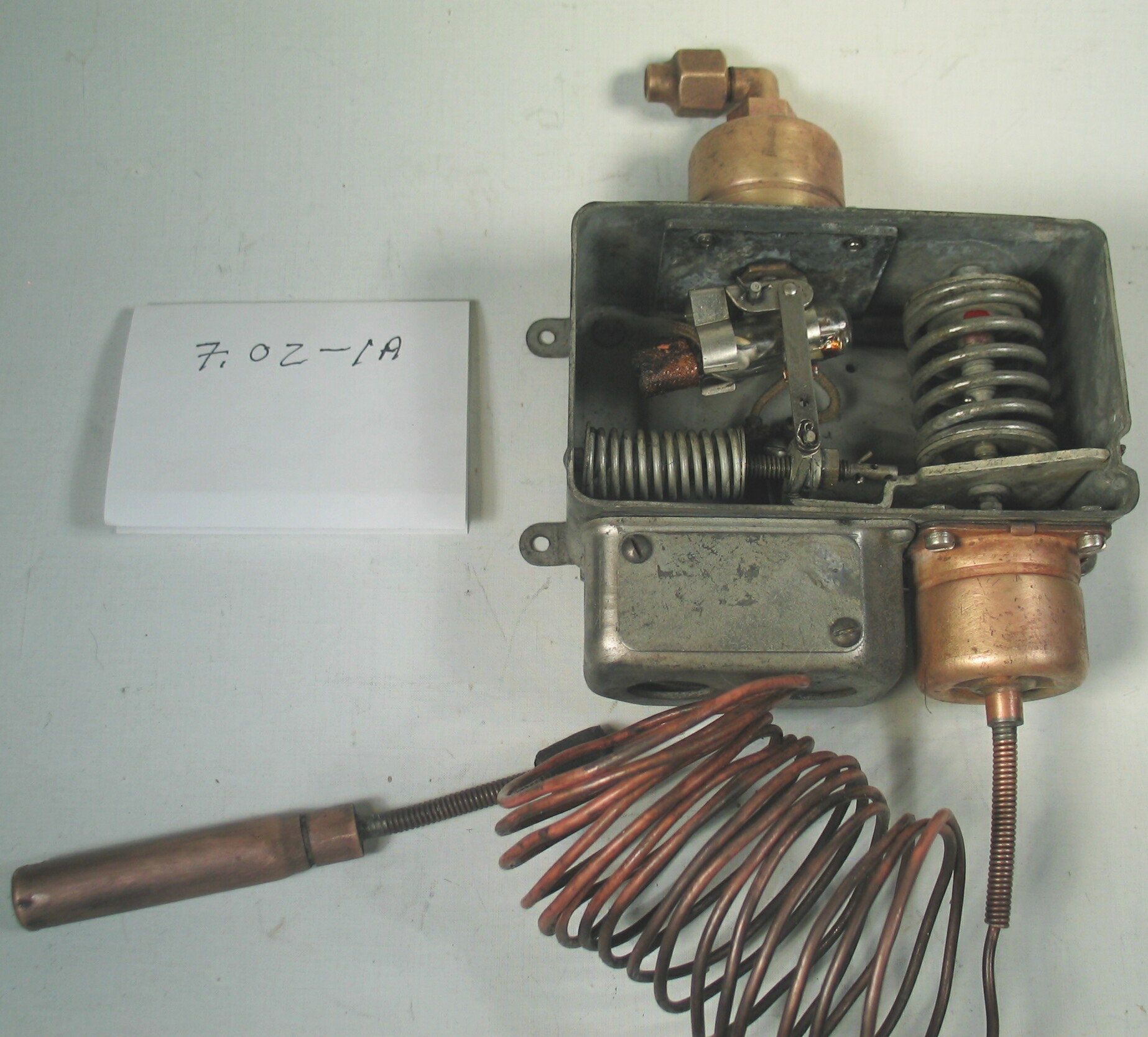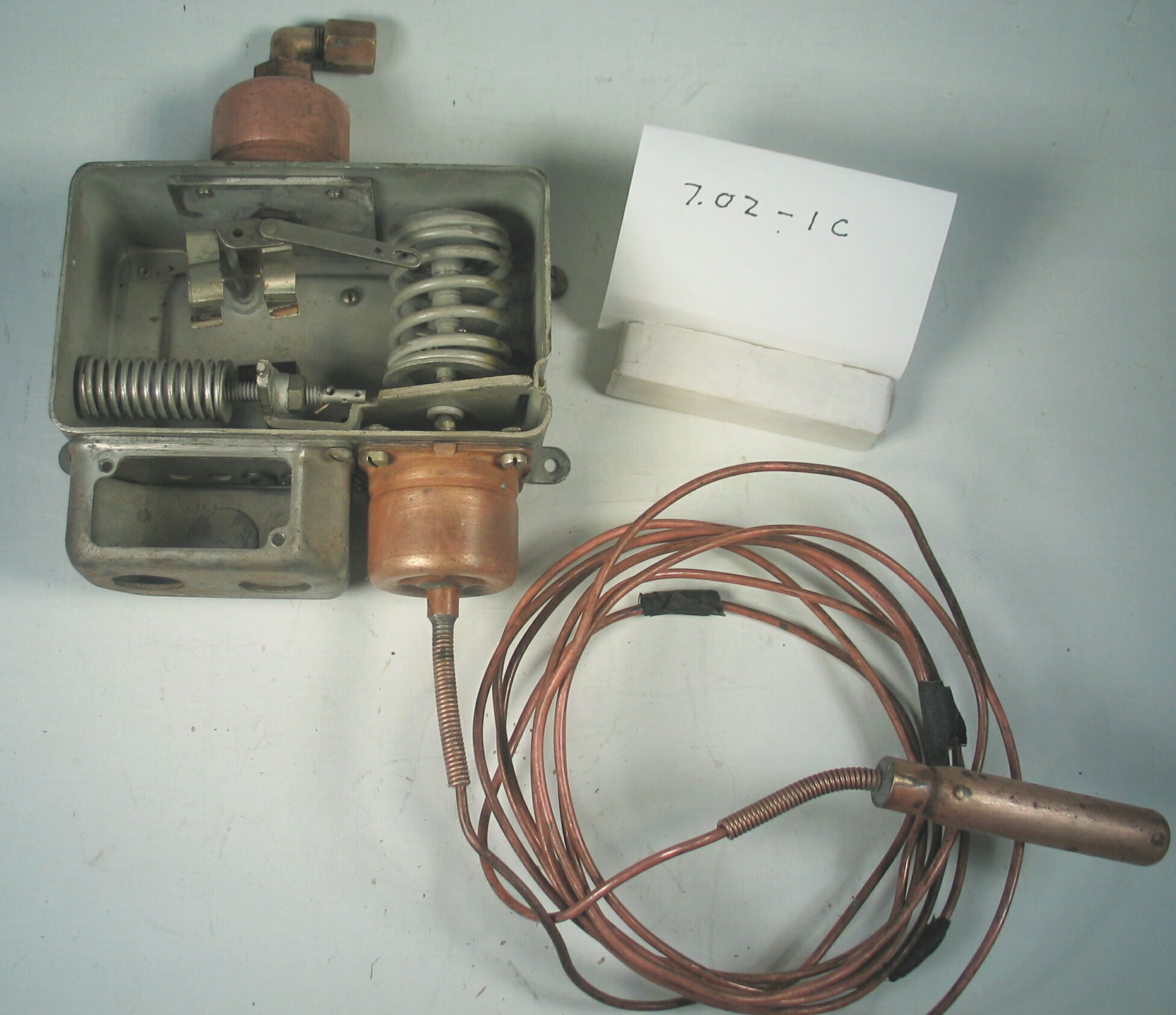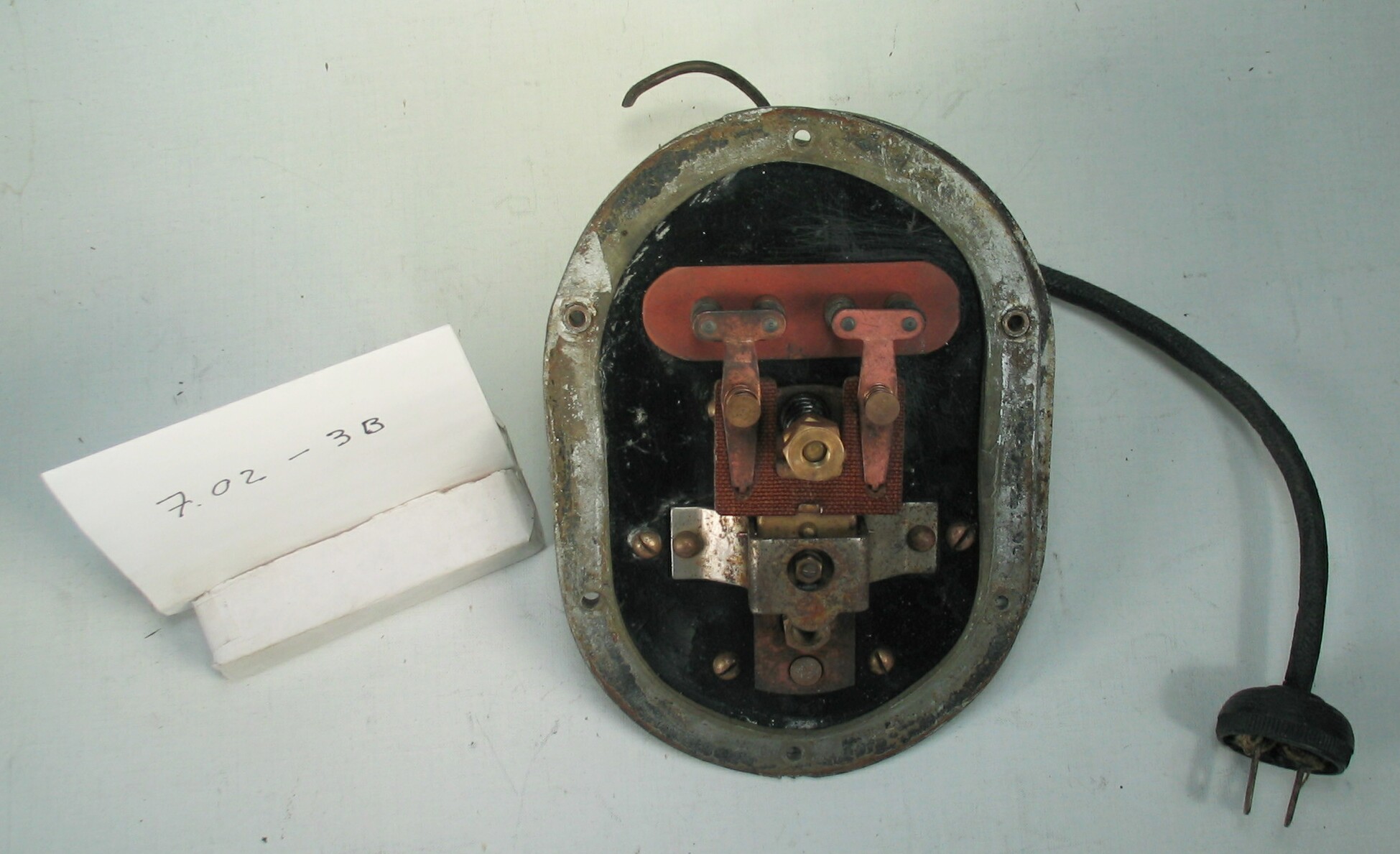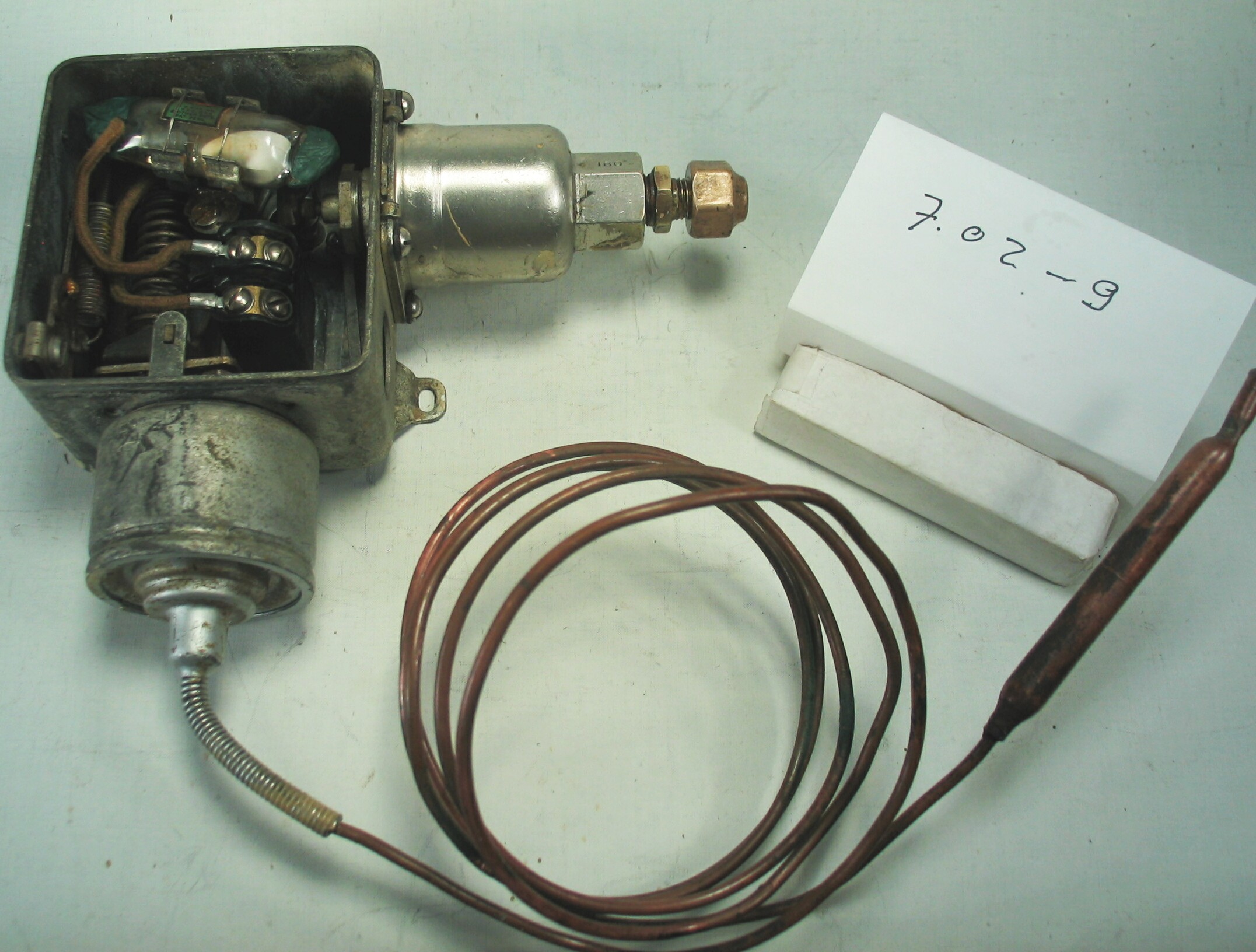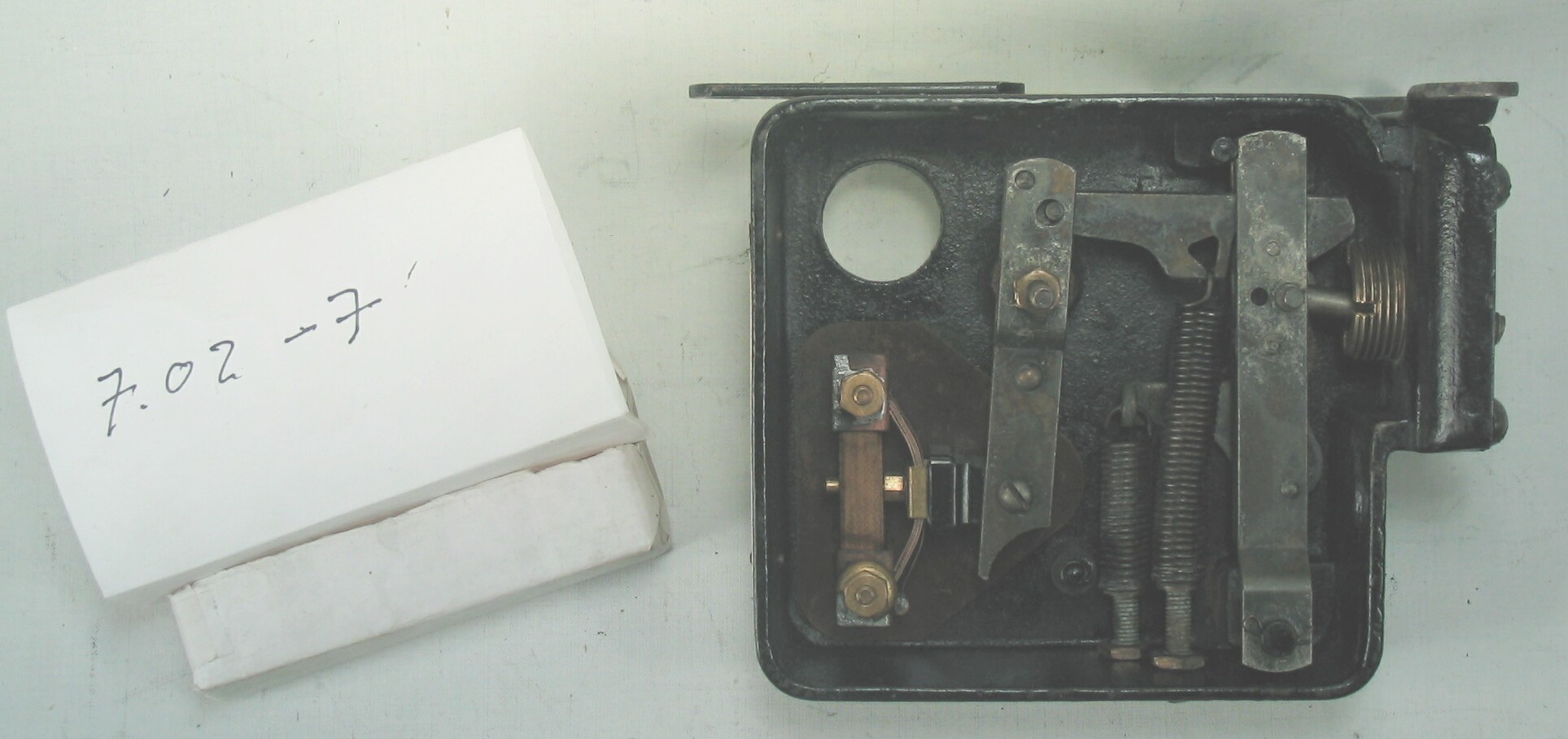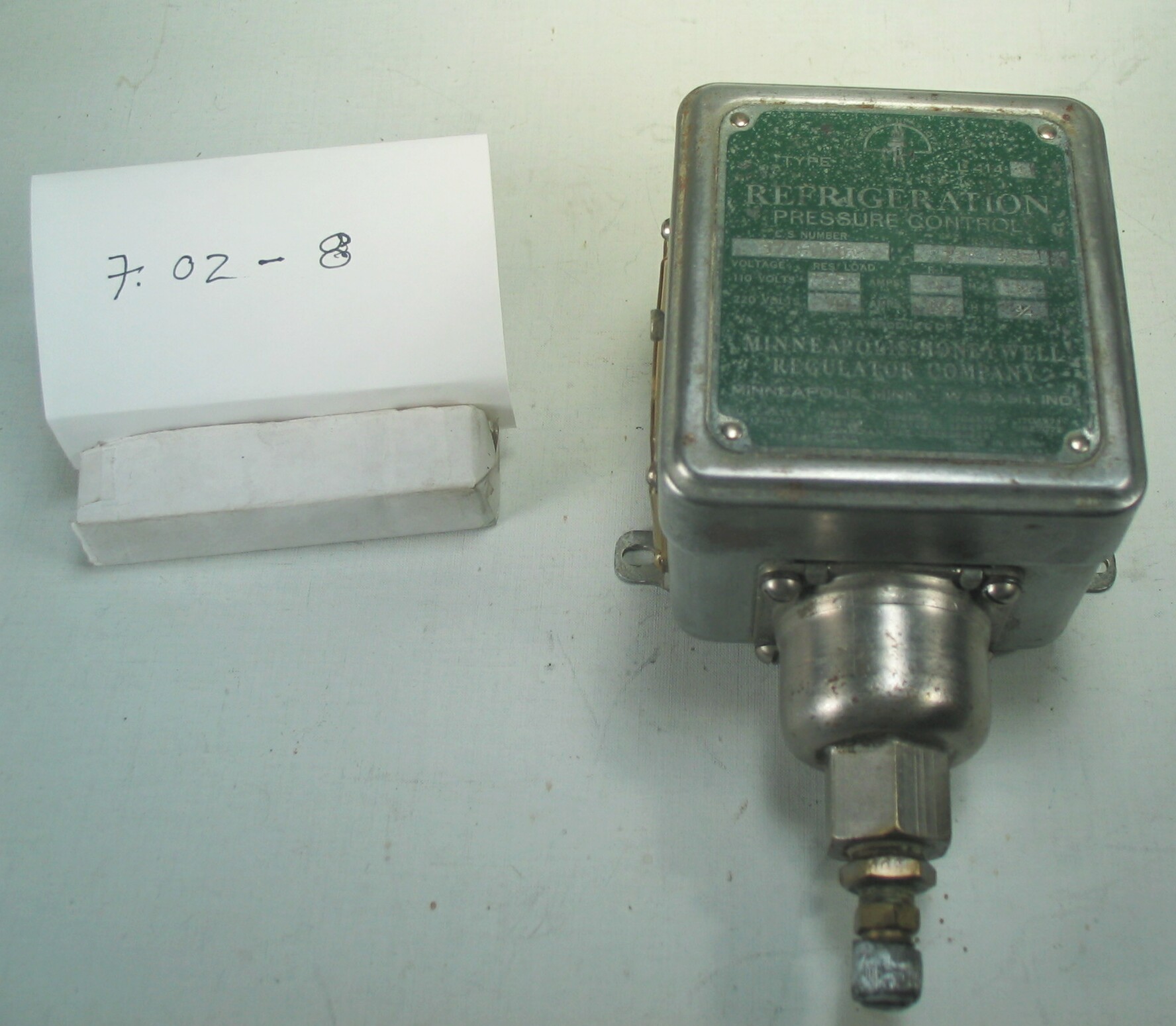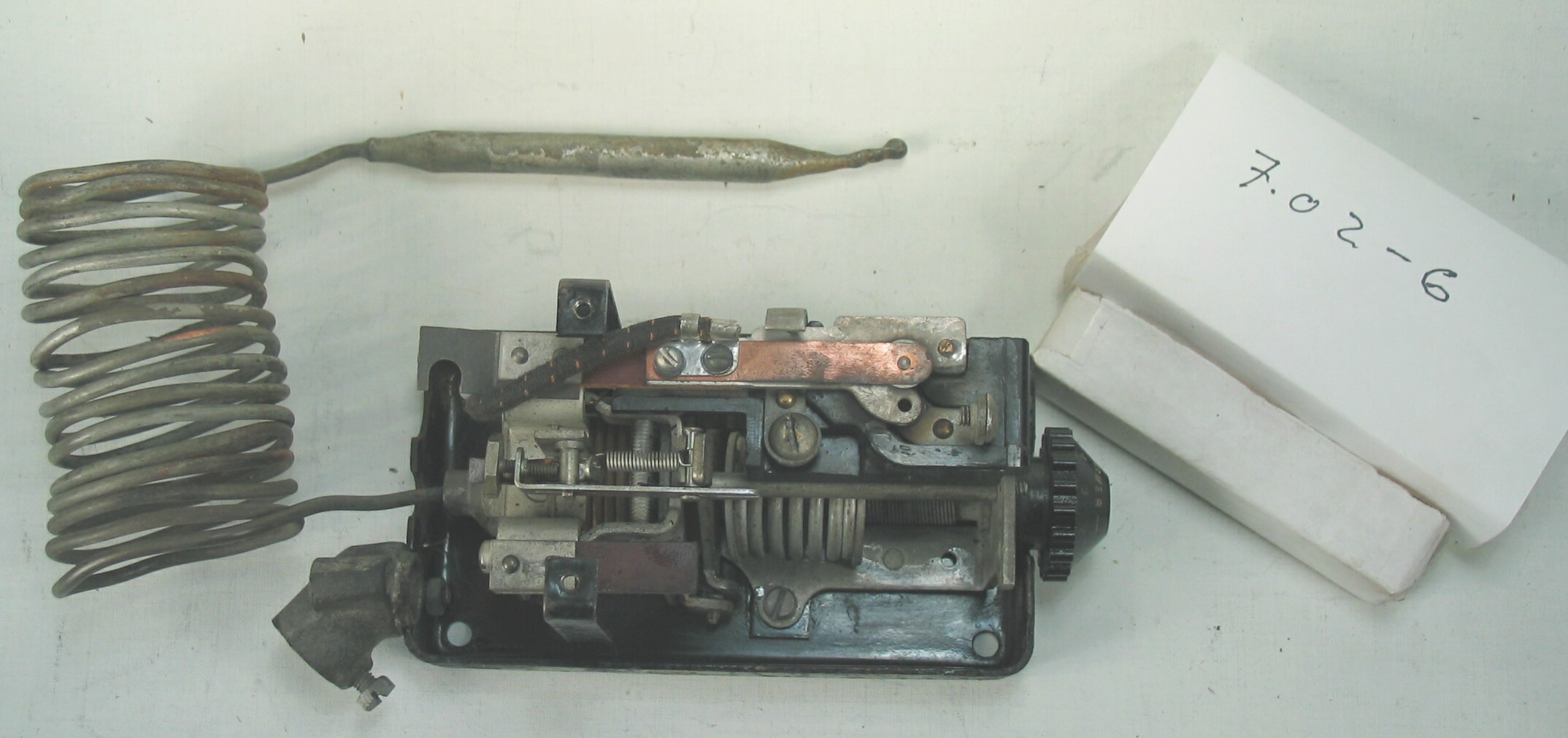7.02-4: Frigidaire 1926 Automatic Temperature Control
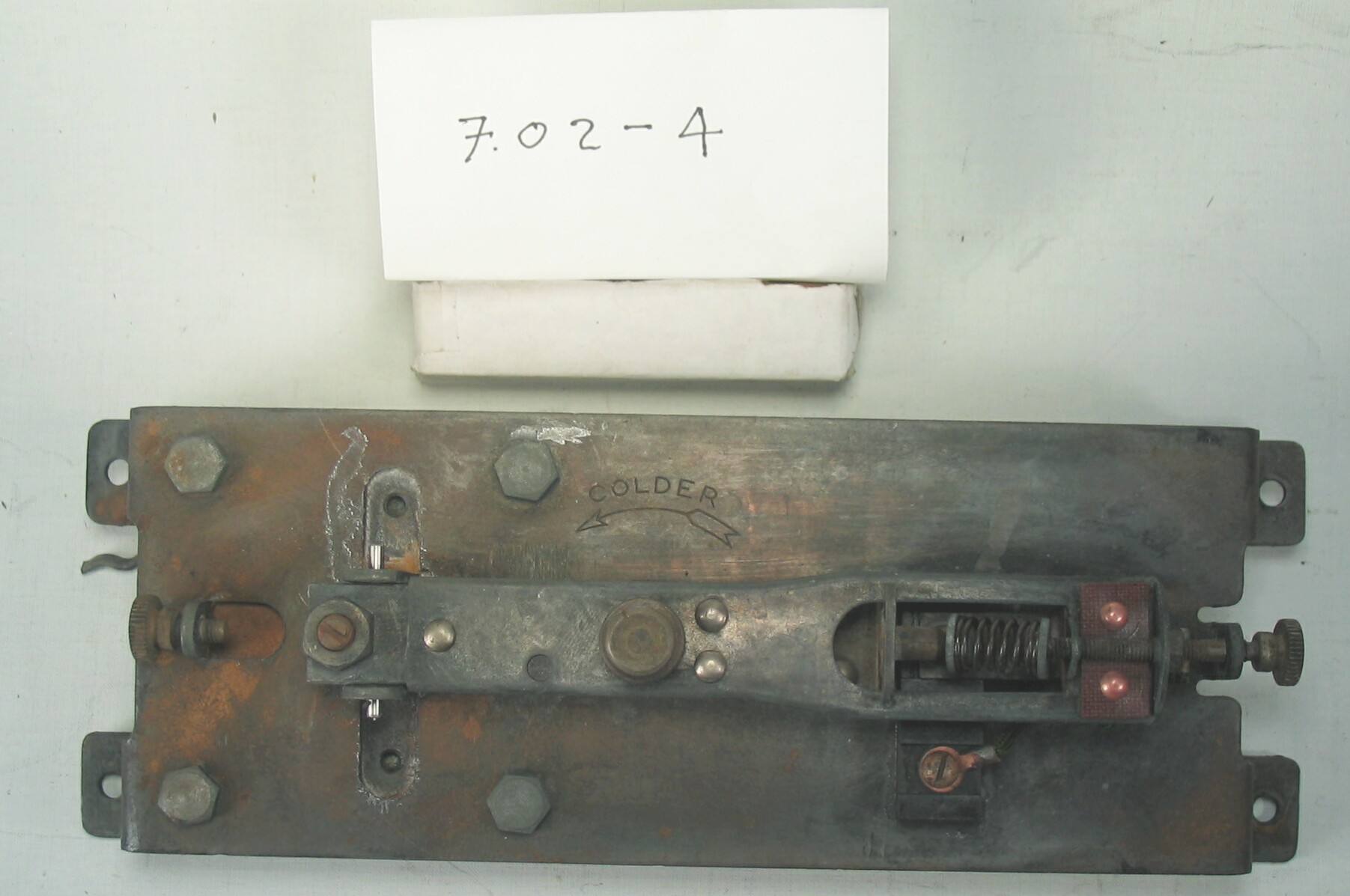
| HHCC Accession No. 2006.035 | HHCC Classification Code: 7.02-4 |
|---|
Description:
An early, crude, mechanically refrigerated cabinet temperature control, engineered with large ‘pan-cake’ style hydraulic power element with large, built-in, thermal sensing bulb; open, single pole heavy copper switch contacts, mounted on steel plate base with press formed sheet steel cover, handsomely decorated in gold and black, Frigidaire, circa 1926
Group:
7.02 Refrigerating and Air Conditioning Pressure and Temperature Controls - Commercial
Make:
Frigidaire
Manufacturer:
Frigidaire Corporation, Dayton Ohio
Model:
Un-marked
Serial No.:
Un-marked
Size:
9 x 4 x 4 in. h
Weight:
7 lbs.
Circa:
1926
Rating:
Exhibition, education, and research quality, illustrating the design, engineering and construction of an early, crude, automated refrigeration controller
Patent Date/Number:
Provenance:
From York County (York Region) Ontario, once a rich agricultural hinterlands, attracting early settlement in the last years of the 18th century. Located on the north slopes of the Oak Ridges Moraine, within 20 miles of Toronto, the County would also attract early ex-urban development, to be come a wealthy market place for the emerging household and consumer technologies of the early and mid 20th century.
This artifact was discovered in the 1950’s in the used stock of T. H. Oliver, Refrigeration and Electric Sales and Service, Aurora, Ontario, an early worker in the field of agricultural, industrial and consumer technology.
Type and Design:
- self-contained, hydraulic actuated thermal bulb, snap action thermal switch
Construction:
Material:
Special Features:
Cover decorated in black with gold lettering, detailing monthly oiling instructions for condensing unit Visual pleasing, unusual, oval, pressed steel cover with twin knurled brass hold-down nuts Unusually rugged mechanical switch construction, with larger copper contact surfaces, a construction style which would soon disappear with the advent of increasingly smaller more finely engineered control technology, see for example ID # 165, code 7.02-10
Accessories:
Capacities:
Performance Characteristics:
Operation:
Frigidaire’s Installation and Service Manual SER.-405, Chapter I-E shows the control as an inherent part of condensing unit construction, as for example in their Model EAE, and Model E refrigeration machines. Here the control is equipped with an extended, coiled capillary line temperature sensor that will presumably extend up into the refrigerated cabinet space. The current model, without extended capillary line and bulb, appears to be designed for direct mounting within the refrigerated space, possibly a large reach-in refrigerator or small walk-in box.
Control and Regulation:
Targeted Market Segment:
Consumer Acceptance:
Merchandising:
Market Price:
Technological Significance:
An unusually crude, weighty and rugged, automated, mechanical switching device in iron plate and steel bolted construction, a quintessential product of Canada’s early period of industrialization. In its design and execution it appears, in many ways, much more like the product of a local blacksmith or iron monger than that of an industrial manufacturing process. It stands as a classic marker and supreme accomplishments of its industrial times. Its significance is as an embryonic product of engineering and manufacturing know-how in the field of automated, electrical switching devices. It represented a know-how that would shortly be seen as the end of a genre. The genre would give way to a new generation of much more sophisticated engineering design concepts, made possible by a new generation of engineering theory building and practice, materials and manufacturing methods. See for example ID # 161 to 164. Of special interest, in benchmarking and appreciating the technology represented here, is in contrasting it with micro-switch technology in common use in automated controllers in Canada by the 1950’s. The contrast in precision engineering, manufacture and performance represents a vast step ahead. See for example ID # 165, code 7.02-10
Industrial Significance:
- See above
Socio-economic Significance:
The crudeness of the automated switching technology represented here, not-with-standing, this device represented admirably the leading edge of a period of profound social and cultural change in Canada, and honour which it would share with many other products of the nations emerging world of 20th century consumerism. It was a period in which low pressure, automated, mechanical refrigeration equipment was making many new things possible, facilitating food processing and storage, as well as industrial process applications, simply not previously possible. Life for Canadians was about to change dramatically, among other things in the range and quality of food and other consumer products to be enjoyed.
See also notes ID # 155, Social-cultural significance
Socio-cultural Significance:
See above
Donor:
G. Leslie Oliver, The T. H. Oliver HVACR Collection
HHCC Storage Location:
Tracking:
Bibliographic References:
- Frigidaire’s Installation and Service Manual SER.-405, Chapter I-E
